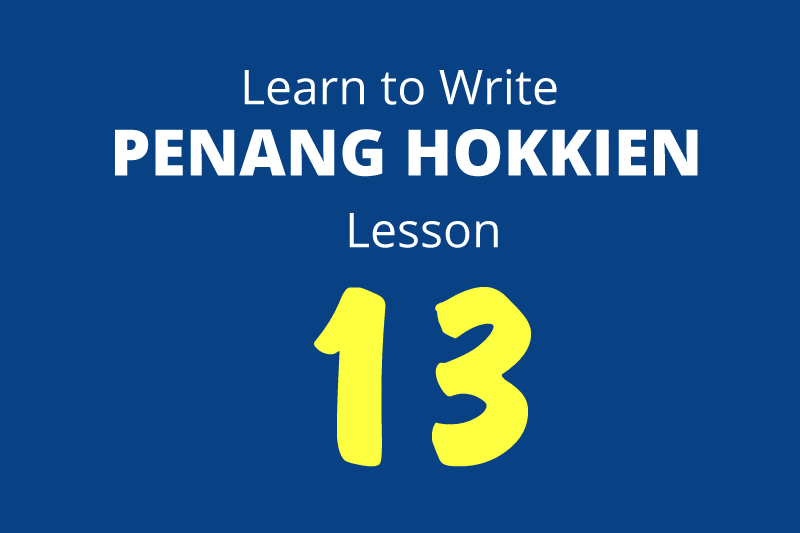
We have just learned numbers in our previous lesson. Now let's take a look at how we use them. In most instances, numbers are employed with classifiers, but before we learn that, let's look at the use of numbers without any classifiers.
In this lesson, we learn a few time measures or durations that are used with numbers:
second: miau4

minute: hoon3ceng1

hour: tiam1ceng1

day: jit1

night: meh2

week: leh1pai3

month: guek3jit1
 , guek1
, guek1  year: ni2
year: ni2 
You may use the above time measures without any classifiers. Be sure to sandhi the number when you place them in front of the time measure.
cit3-pak1 miau4

one hundred seconds
gor33 hoon3ceng1

five minutes
nor33 tiam1ceng1

two hours
lark3 jit1

six days
chit1 meh2

seven nights
cit3 leh1pai3

one week
see1 guek3jit1

four months
jee33-cap3 ni2

twenty years
In addition to the above, there is a time measure that is the exception to the rule which you need to learn. I call it a "pseudo classifier", and that's "-leh3 ji33". (That's the general classifier with the word ji33.) It is used for blocks of five minutes, and is commonly employed when expressing time.
cit3-leh3 ji33

one block of five minutes
nor33-leh3 ji33

two blocks of five minutes (hence, the minutes)
gor33-leh3 ji33

five blocks of five minutes (hence, 25 minutes)
The word for "half" is pnua3
 . You can use it with time measures too. Be sure to sandhi it when you place it in front of the time measure.
. You can use it with time measures too. Be sure to sandhi it when you place it in front of the time measure.pnua1 tiam1ceng1

half an hour
pnua1 guek3jit1

half a month
pnua1 ni2

half a year
To ask questions related to time measures, such as "how long", you say "kui4"
 . Like numbers, it sandhis when placed in front of the time measure.
. Like numbers, it sandhis when placed in front of the time measure.Kui1 miau4?

How many seconds?
Kui1 hoon3ceng1?

How many minutes?
Kui1-leh3 ji33?
 How many "blocks of 5" minutes?
How many "blocks of 5" minutes?Kui1 jit1?

How many days?
Kui1 guek3jit1

How many months?
Kui1 ni2?

How many years?
(You may also add a classifier to it, making "kui1-ko1 guek1"
 , which also means "how many months", but I'll keep things simple by teaching you a set that you can use without complicating things.)
, which also means "how many months", but I'll keep things simple by teaching you a set that you can use without complicating things.)If you want to ask "how long", without specifying whether seconds, minutes or anything, the term is "cor3 ku4?"
Therefore:
Question: Cor3 ku4?

Answer: Snar3-leh3 ji33
 (15 minutes)
(15 minutes)Question: Cor3 ku4?

Answer: Cit3 tiam1ceng1
 (An hour)
(An hour)Question: Cor3 ku4?

Answer: Lark3 jit1
 (6 days)
(6 days)Question: Cor3 ku4?

Answer: Cap3 ni2
 (10 years)
(10 years)
Previous Lesson | Main Page | Next Lesson
Language Learning Tools
Use the following language learning tools to learn Penang Hokkien!Learn Penang Hokkien with uTalk
This app opens the door to over 150 languages.Return to Penang Hokkien Resources

Copyright © 2003-2025 Timothy Tye. All Rights Reserved.

 Go Back
Go Back
